When Dancers Double As Musicians, How Do They Approach Both Art Forms?
In an episode of Netflix’s “Move,” contemporary choreographer Akram Khan warms up in the studio, practicing the classical Indian kathak dancing he has studied since childhood. Around his ankles are the art form’s traditional bells—149 on each leg. He calls them “an entire community of voices” that he strives to distill into a single tongue.
Although Khan is best known as an award-winning choreographer, this moment in the docuseries reminds us that he also has the mind of a musician. Percussive dancers of all styles are passionate about their musicianship: how they shape their sounds, interact with other musicians, think about their instruments and compose intricate rhythms. In addition to movement, musicality informs their identities as performers and choreographers.
Heather Cornell: “It’s been a lifelong quest for me to reconnect tap dancing with music.”
After a 14-year stretch with barely any tap dancing, Heather Cornell walked into the Clark Studio Theater at Lincoln Center in 1982 to meet legendary hoofer Charles “Cookie” Cook. The musicality of his dancing moved her to tears. “My life restarted,” she says. “It’s been a lifelong quest for me to reconnect tap dancing with music.”
The co-founder of Manhattan Tap, one of New York City’s leading tap ensembles in the ’80s and ’90s, Cornell has never accepted a gig without live music.
“I’ve lost a lot of work and created anxiety on a lot of shows, but this is important enough to stand my ground,” she says. “I consider myself a musician, and it doesn’t make sense for a musician to walk onstage and press a tape recorder and start playing their instrument.”
Absent formal music training, Cornell, 64, developed her extensive musical knowledge by collaborating and composing with musicians, including longtime mentor and renowned bassist Ray Brown. She’s also studied world music forms in Peru and Cuba, where she finds audiences are savvier about the connections between music and dance. She even formed a world music and dance ensemble, Making Music Dance, in 2012.
“I play around a lot with how to reeducate North American audiences so that they listen as well as observe in a dance environment,” she says. “There’s no reason there should be any separation between art forms. It’s a bit of an illness in our culture.”
Michigan’s Hope College, where Cornell joined the dance department last year, has been more than receptive to her multidisciplinary ideas. She’s already choreographed for a choir performance and made a piece featuring a percussionist for the school’s dance company. She’s working with the dance and music departments to create a percussive music and dance minor.
“If I’m making a piece, I’m not going to divorce my responsibility to the percussion from the process,” she says. “When I’m choreographing, the first thing I have to do is compose. It’s always going to be a music, theater and dance process.”
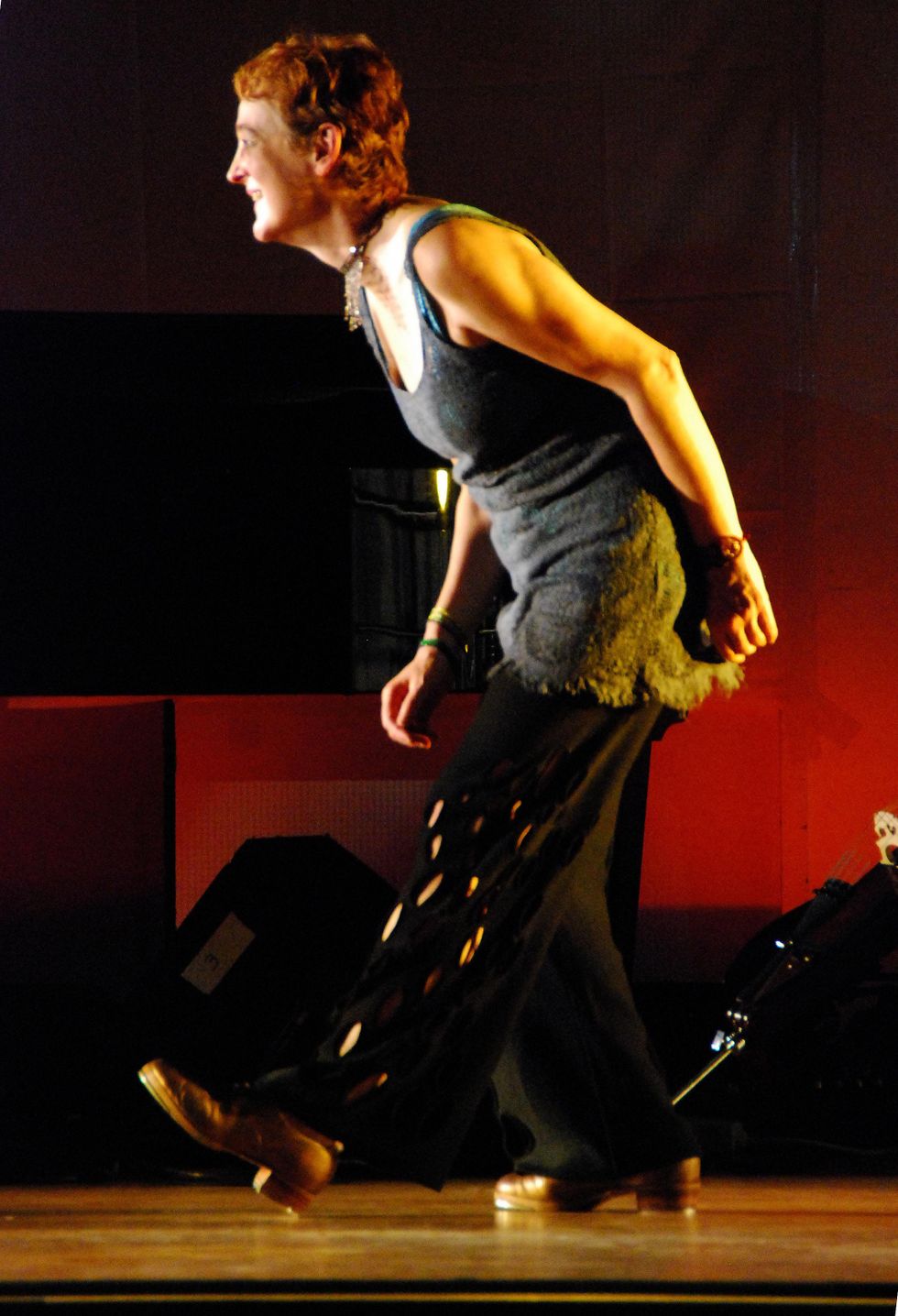
Courtesy Cornell
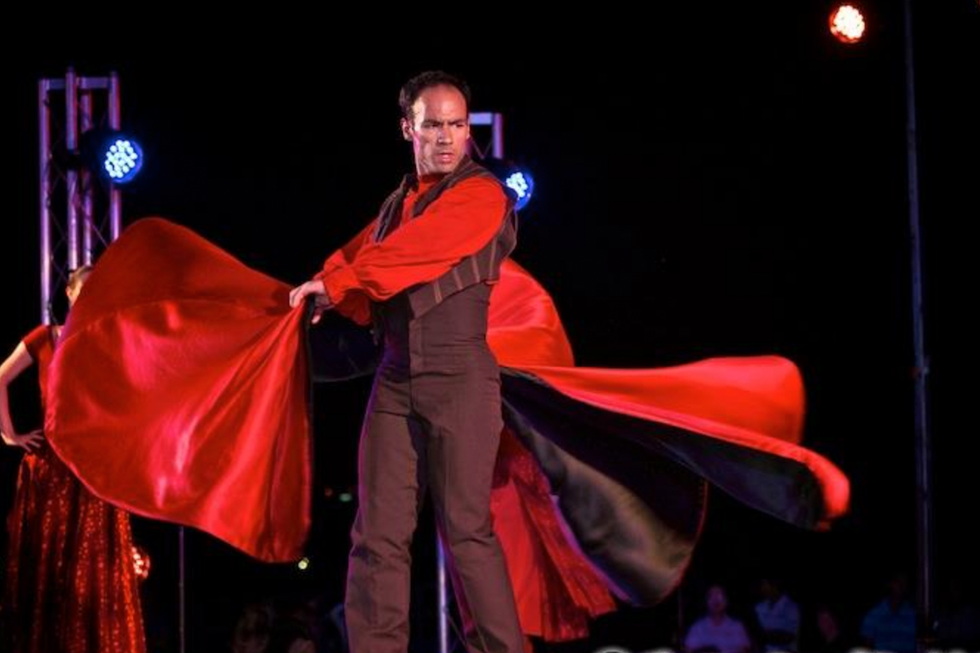
Courtesy Ensemble Español
José Torres: “Percussive dance has always been on the fringes.”
Many flamenco teachers, according to José Torres, have a common refrain: If it doesn’t first enter through your ears, it won’t come out through your body.
“Even before the guitar and the cajón and the castanets and the shoes, flamenco started with singing, hand claps and fingers snaps,” says Torres, 43, who dances with Ensemble Español Spanish Dance Theater, in residence at Northeastern Illinois University in Chicago.
In solo and duet flamenco work, which is typically structured improvisation, the singers, dancers and musicians follow the rhythms of a particular palo, or musical style. The dancer acts like a conductor many times throughout the dance, ensuring that everyone stays together by inserting llamadas (calls) to indicate a transition is coming. His movements interpret the cante of the singer.
“The singing guides me, and I don’t even think about the rhythms at that point because they’re so ingrained,” Torres says.
While audiences may not comprehend the rhythmic complexities of the art form, Torres says it’s the dancer’s responsibility to make sure they know what they’re watching—that is, the emotions that the singer is expressing. Personally, he hopes that viewers learn even more.
“Percussive dance has always been on the fringes of dance,” says Torres, “but I’ve never agreed with that vision. Whether you’re going into the studio after 20 years to do pliés at 9 am or punta planta tacón golpe at 9 am, it’s the same. It’s important for audiences to understand that. We’re all communicating the same emotions and telling the same types of stories.”
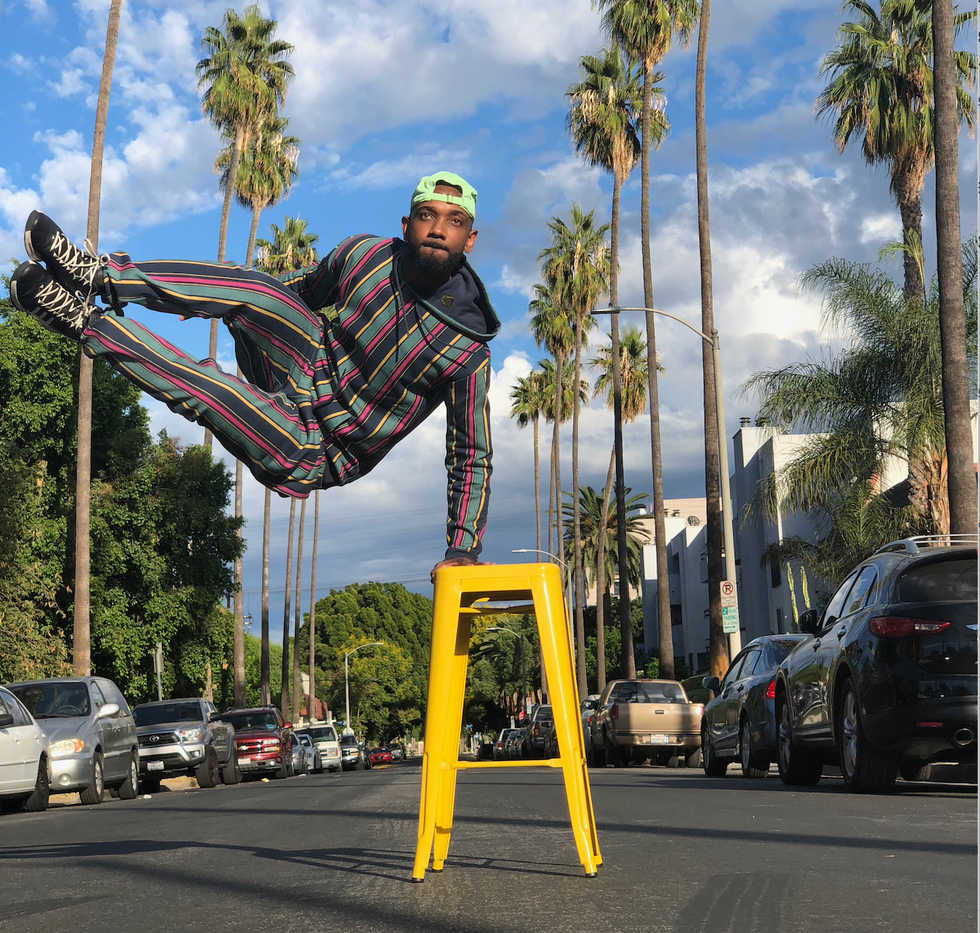
Courtesy Josef
Jamal Josef: “I pretty much make up the remix.”
Having grown up in a family of musicians, Jamal Josef knows exactly what he wants to hear when he choreographs a stepping routine.
“It’s like creating a new score on top of the music,” he says. “I add what I think would have enhanced a song or what I think a producer missed.” With a laugh, he adds, “I pretty much make up the remix.”
Josef, 32, says he usually listens for the drums in a song or imagines the freestyling of a drummer as he choreographs, which is no surprise given the role of dance and drums in African culture, from which stepping and tap derive.
He describes his teaching style as onomatopoeia, meaning he sings the rhythms of what he wants students to execute rather than using counts.
“When you’re stepping, you’re creating a beat and making music,” he says. “That allows me to say, if I’m doing another style, ‘What more could I do with this? What else am I hearing? What are the dynamics of movement and sound here?’ ”
Raised in Oakland, California, Josef now resides in Los Angeles. Though he has many TV credits to his name, his biggest project was co-choreographing Beyoncé’s famous Coachella performance in 2018. He suspects he got the job because being a stepper makes him something of a specialty act.
“Stepping isn’t like other styles because it’s not up—you’re stepping into something,” he says. “You feel the intensity, you see the precision and you hear the sound. It’s a deeper connection to the earth and to other people.”
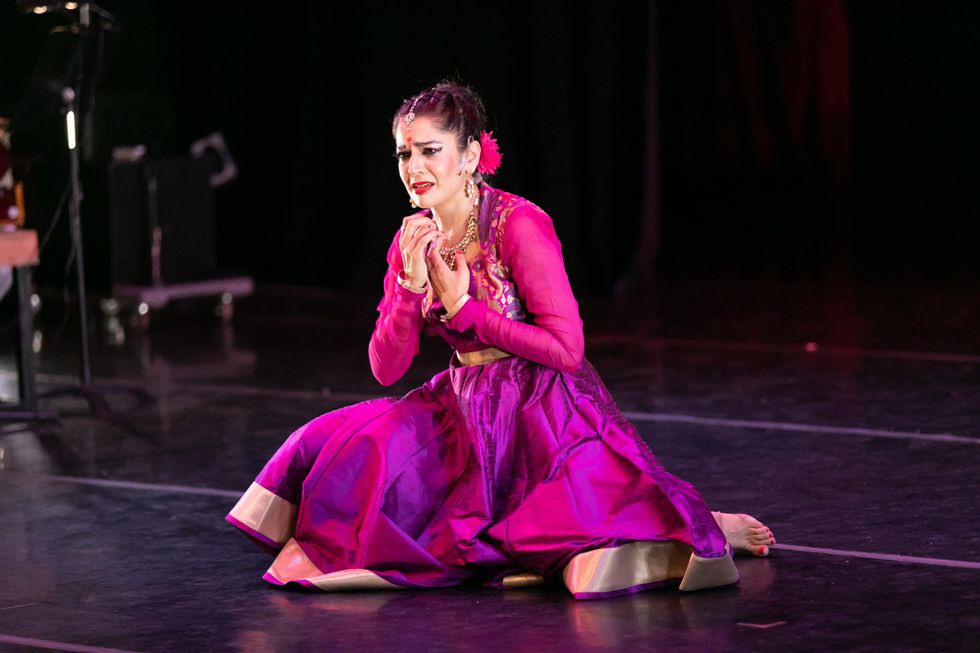
Courtesy Leela Dance Collective
Rachna Nivas: “The true form is about a rhythmic interplay.”
Kathak artist Rachna Nivas never used prerecorded music while training with her mentor, the late Pandit Chitresh Das. “We learned how to recite the rhythms we were dancing and the taal, or time signature, while doing opposing rhythms with our feet,” says Nivas, a teacher, soloist and co-founder of Leela Dance Collective. “It was an intellectual and spiritual exercise to create a oneness with the music and the dance. If I didn’t study and love the music of the art form as deeply as the movement, I’d be extracting its heart and soul.”
Study and passion are indeed what it takes to master the complicated patterns of Indian classical music. The rhythms that kathak dancers recite are replicated in their footwork, movement and gestures, accompanied by ghungroo, the small ankle bells they use as their instrument. Accompaniment might also come from melodic instruments, vocals and someone playing the tabla, a drum, especially during the kind of improvisational exchange that is central to kathak dance.
However, Nivas, 44, says she’s seen that dynamic, playful interaction between dancer and musician change in recent years.
“As we’ve moved as a society toward having a higher production value, using video as a platform and creating things in short form, there’s been a separation between musicians and dancers,” she says. “When dancers dance less with live musicians and are more concentrated on lighting and production, the music becomes a static backdrop for the choreography as opposed to an interactive participant.”
As a self-proclaimed activist for her art, she’s committed to preserving what she perceives as the essence of kathak dance.
“The true form is about a rhythmic interplay, a friendly rivalry, between the hands of the drummer and the feet of the dancer—unedited and unadulterated,” she says. “But that requires the dancer to have a deep knowledge of music and the musician to have a deep knowledge of dance. You don’t see enough of that.”
Nic Gareiss: “My ears are hearing all the timbres of my dancing anew.”
Michigan native Nic Gareiss loves to work with musicians—he typically spends about 36 weeks a year touring with them—but he gives them another name.
“I call them ‘dancers who hold things,’ ” says Gareiss, one of Dance Magazine‘s “25 to Watch” in 2019. “Their sound only comes forth because there’s movement.”
Gareiss, 34, practices percussive dance forms from Ireland, Canada and Appalachia—such as flatfooting, step dance and clogging—that have a deep relationship with traditional fiddle and banjo music. A shuffle, for example, is both a classic step in clogging and other percussive dance forms and a bowing rhythm that matches it in fiddling.
“I like to perform with live music because of the corporeality of the sound maker, like watching a fiddler’s bow arm or a guitarist’s fingers,” he says. “That’s important to my process of trying to respond in a physical way to sound.”
Gareiss dances with the international musical quartet This is How we Fly, which splits its royalties equally amongst Gareiss and the musicians. He says his process has evolved in positive ways throughout the pandemic, even though he’s been isolated and indoors.
“Prior to COVID-19, I was preparing things that I would take into a space to work with another dancer or musician,” he says. “Now I’m preparing things that have to have a soundscape of their own. My ears are hearing all the timbres of my dancing anew, even the way the old floor in my apartment squeaks.”
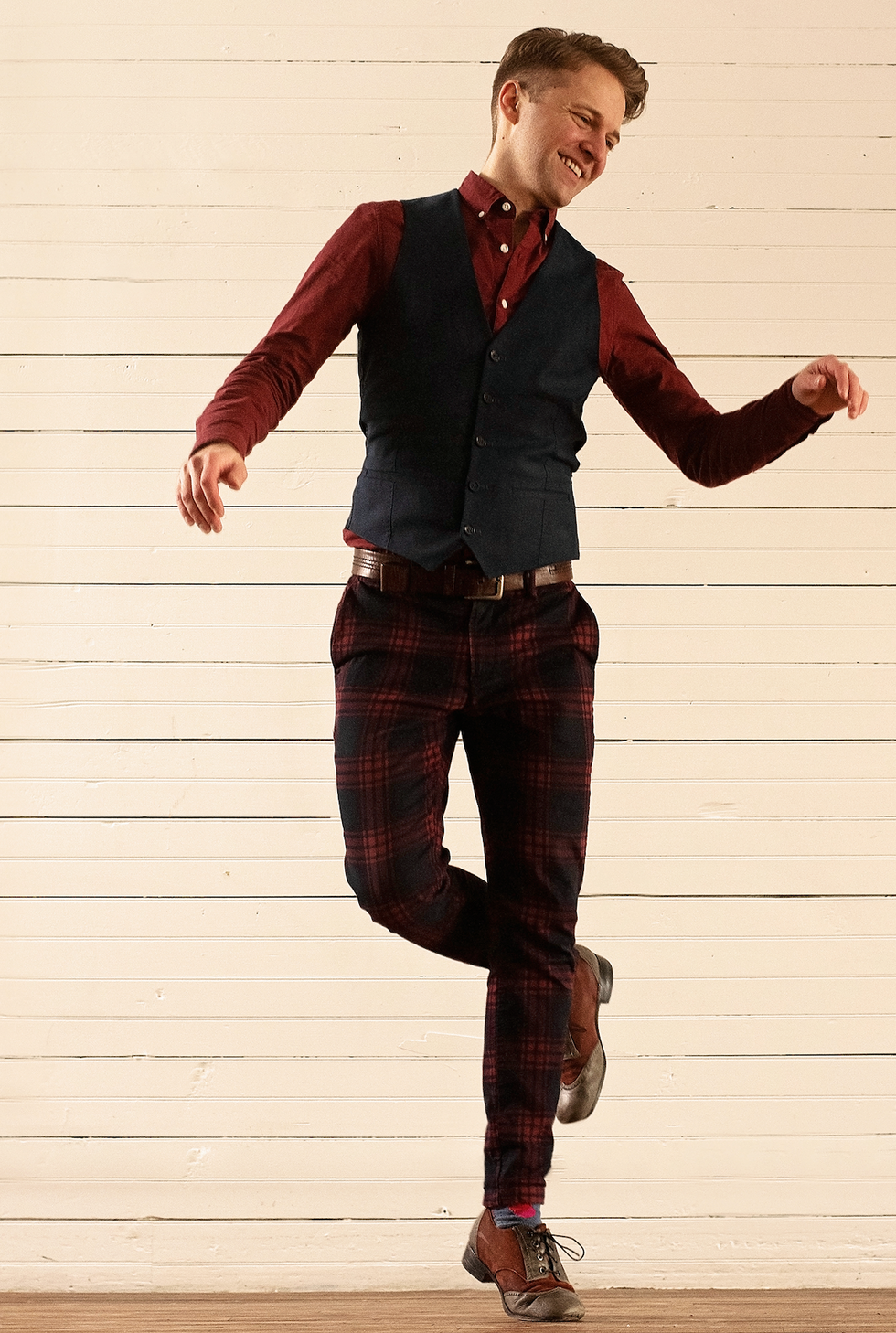
Hillary Rees, Courtesy Gareiss
Inspired by the symbiosis he sees between movement and music, Gareiss co-directs the annual Earful of Fiddle Music & Dance Camp in Rodney, Michigan. There are an equivalent number of dance and music classes, and the musicians and dancers often sit in on each other’s lessons to learn and collaborate.
“I’m interested in musicians thinking about their bodies and movement, and dancers thinking about sound and audibility,” he says. “We have a precedent about using music in a dance class. I wonder about how musicians might use audio or video recordings of dancers in their classes.”



